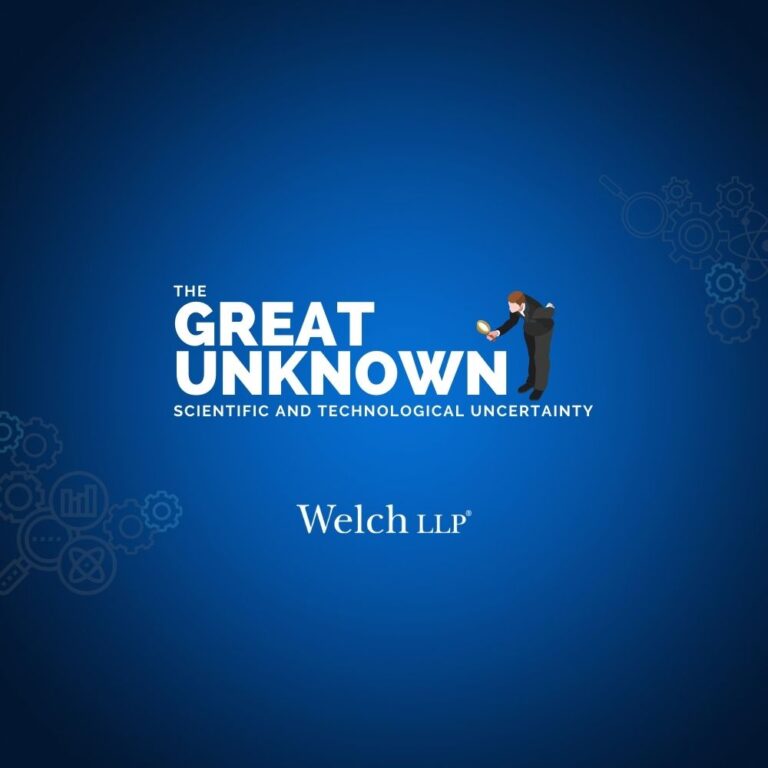Scientific Research & Experimental Development (SR&ED) claimants have been provided with an updated set of eligibility guidelines (as of August 13th, 2021) based on the ‘how’ and ‘why’ SR&ED is conducted. These simplified guidelines heavily emphasize that a systematic investigation must be undertaken (i.e. the ‘how’) and that an advancement in scientific knowledge or technology must be achieved (i.e. the ‘why’). The interpretation of these guidelines, however, still remains at the discretion of the CRA, and although these rules attempt to simplify the eligibility approach, they can still remain subjective and convoluted to SR&ED claimants.
Recently, the Tax Court has released their decision on a case which was the first to reference these new guidelines, Airzone One Ltd. v. The Queen, 2022 TCC 29. This case conducts a detailed analysis of the CRA’s decision-making process with regards to this new eligibly criteria, and provides a cross-examination of the Court which can help claimants better understand and identify what activities and projects could be considered SR&ED eligible under these updated guidelines.
Overview of Case
The Appellant, Airzone One Ltd. (“Airzone”), carried out work on six projects throughout the 2014 and 2015 taxation year related to air quality monitoring and the sampling of airborne contaminants. The Appellant claimed the SR&ED investment tax credits associated with the research and experimental development expenses incurred by these six projects. The Minister of National Revenue disallowed all of the Appellant’s SR&ED claims on the basis that the methods used by the Appellant were routine in nature and the Appellant’s work was not undertaken to achieve a technological advancement. This determination by the Minister was ultimately based on the fact that the work did not satisfy the ‘why’ criteria of SR&ED eligibility.
At the end of the hearing, the Court acknowledged that the evidence provided by the Appellant established that the work carried out by Airzone satisfied the ‘how’ (i.e. a systematic investigation was conducted). However, the question of whether the work satisfied the ‘why’ remained as the Minister claimed that Airzone resolved the technical uncertainties in each project by ‘applying standard practices, methods or processes of routine analytical chemistry or engineering’ and, thus, no new knowledge was created.
Analysis
The Court conducted its analysis based on the five question model as set out in Northwest Hydraulics Consultants Ltd. V. R. (98 DTC 1839) but further extended this model to the ‘how’ and ‘why’ of SR&ED by relating questions two, three and five to the ‘how’ and one and four to the ‘why’.
When concerning the use of standard methods or procedures, the Court suggested that a determination should be made on the basis of if a project satisfied the ‘how’, as it would be unlikely that a taxpayer would conduct a systematic investigation that satisfied the ‘how’ at an additional expense if the work was not completed to achieve a technological advancement.
The Court highlighted three important points as to why the Minister’s judgement was incorrect and that the ‘why’ criteria was in fact satisfied by the work undertaken in a number of Airzone’s projects:
- The Court recognized that the basis of the denial of Airzone’s claim was due to the absence of a technological advancement. In a cross-examination, the Court asked the CRA a series of questions to clarify how this conclusion was made. The CRA answered that a general Google search was conducted to determine the available information on air quality analyses. The references were general in nature and did not provide much insight on the specific work conducted by Airzone, furthermore, the CRA could not recall exactly the sources that were consulted. The Court conjectured that these sources were not cited as they were not of particular relevance.
- The Court surmised that the ‘technical challenges’ faced by Airzone were synonymous with ‘technical uncertainties’, and that ‘optimizing existing methods’ was an acknowledgement by the Minister that Airzone undertook work to improve an existing process or method and achieve a technological advancement in the context of experimental development work.
- The Court recognized that, for a number of Airzone’s projects, the experimental work undertaken did in fact satisfy the ‘why’ criteria and that these projects should not be considered routine as they required the development of entirely new protocols to achieve their goals which resulted in an advancement of its technological knowledge in the field.
For example, the Court determined that there were too many variables or unknowns for Airzone to be able to accurately detect and measure an array of 52 airborne contaminants, and that data on how to extract these contaminants was not publicly available. As outlined in the guidelines for the ‘why’ requirement of SR&ED, these are two characteristics of a problem which suggest technological knowledge is insufficient and, thus, an uncertainty exists. As such, the Court disagreed with the determination of the Minister that Airzone used standard methods and procedures to establish these extraction and identification protocols, suggesting that Airzone had to develop entirely new methods and protocols.
The Court concluded that four of the six projects were SR&ED eligible and that two of the projects were properly disallowed by the Minister on the basis that the work constituted routine engineering with the application of standard methods and techniques which did not achieve a technological advancement.
Takeaways
This Tax Court case demonstrates how the CRA may apply the ‘how’ and ‘why’ criteria to determine the SR&ED eligibility of a project. There are a number of specific takeaways that can be elicited from this court case. Namely, the following:
- Defining clear technological advancements that were achieved as a result of an experimental investigation and analyses are crucial to fulfilling the ‘why’ criteria. Identifying a knowledge gap in the existing technological base and determining how the claimant generated knowledge to address this gap in knowledge can help define a strong advancement.
- The Court has acknowledged that ‘optimizing existing methods’ can be considered to be an improvement of an existing process and, thus, would achieve a technological advancement in the context of experimental development.
- A cursory Google literature survey can reveal how the CRA may determine the existing and publicly available knowledge in the associated field. As such, understanding the knowledge base can be beneficial to the claimant to ensure the work is positioned in such a way to demonstrate that it is built upon the existing knowledge gaps in the field.
- Defining a strong project uncertainty involves identifying when technological knowledge may be insufficient to resolve a specific problem. A number of these characteristics (which identify when knowledge may be insufficient) have been defined in the ‘how’ and ‘why’ eligibility guidelines, including the following:
- Existing design methods are not applicable;
- Requirements or specifications do not conform to existing standards;
- Too many variables or unknowns;
- Parameters or conditions are outside of the normal operating range;
- Nature of the problem is evolving;
- Data is not readily available;
- There are interlocking constraints.
Thus, it is important to understand which of these characteristics exist in the specific problem the claimant is facing to demonstrate how the resolution of this problem will result in the generation of new technological knowledge.
Author:
Nicholas Ogrodnik
NOGRODNIK@welchllp.com
Technical Advisor












